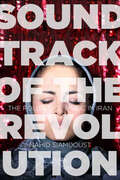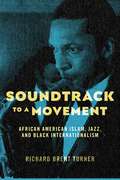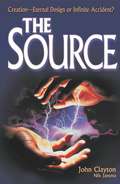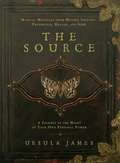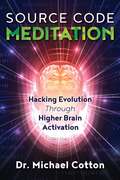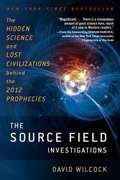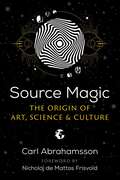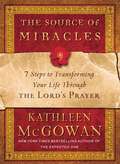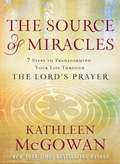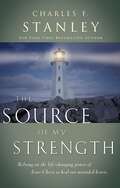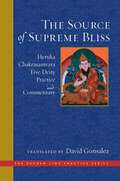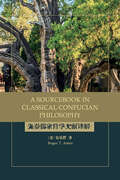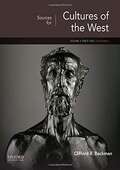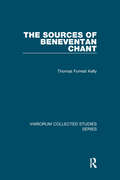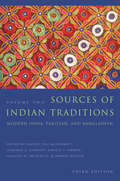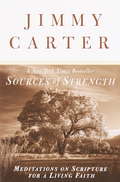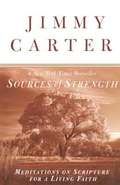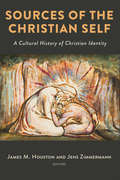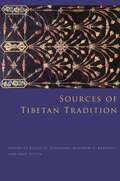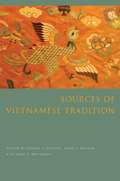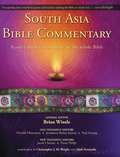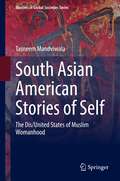- Table View
- List View
Soundtrack of the Revolution: The Politics of Music in Iran
by Nahid SiamdoustMusic was one of the first casualties of the Iranian Revolution. It was banned in 1979, but it quickly crept back into Iranian culture and politics. The state made use of music for its propaganda during the Iran–Iraq war. Over time music provided an important political space where artists and audiences could engage in social and political debate. Now, more than thirty-five years on, both the children of the revolution and their music have come of age. Soundtrack of the Revolution offers a striking account of Iranian culture, politics, and social change to provide an alternative history of the Islamic Republic. Drawing on over five years of research in Iran, including during the 2009 protests, Nahid Siamdoust introduces a full cast of characters, from musicians and audience members to state officials, and takes readers into concert halls and underground performances, as well as the state licensing and censorship offices. She closely follows the work of four musicians—a giant of Persian classical music, a government-supported pop star, a rebel rock-and-roller, and an underground rapper—each with markedly different political views and relations with the Iranian government. Taken together, these examinations of musicians and their music shed light on issues at the heart of debates in Iran—about its future and identity, changing notions of religious belief, and the quest for political freedom. Siamdoust shows that even as state authorities resolve, for now, to allow greater freedoms to Iran's majority young population, they retain control and can punish those who stray too far. But music will continue to offer an opening for debate and defiance. As the 2009 Green Uprising and the 1979 Revolution before it have proven, the invocation of a potent melody or musical verse can unite strangers into a powerful public.
Soundtrack to a Movement: African American Islam, Jazz, and Black Internationalism
by Richard Brent Turner**FINALIST for the 2022 PROSE Award in Music & the Performing Arts****Certificate of Merit, Best Historical Research on Recorded Jazz, given by the 2022 Association for Recorded Sounds Collection Awards for Excellence in Historical Sound Research** Explores how jazz helped propel the rise of African American Islam during the era of global Black liberation Amid the social change and liberation of the civil rights and Black Power movements, the tenor saxophonist Archie Shepp recorded a tribute to Malcolm X’s emancipatory political consciousness. Shepp saw similarities between his revolutionary hero and John Coltrane, one of the most influential jazz musicians of the era. Later, the esteemed trumpeter Miles Davis echoed Shepp’s sentiment, recognizing that Coltrane’s music represented the very passion, rage, rebellion, and love that Malcolm X preached. Soundtrack to a Movement examines the link between the revolutionary Black Islam of the post-WWII generation and jazz music. It argues that from the late 1940s and ’50s though the 1970s, Islam rose in prominence among African Americans in part because of the embrace of the religion among jazz musicians. The book demonstrates that the values that Islam and jazz shared—Black affirmation, freedom, and self-determination—were key to the growth of African American Islamic communities, and that it was jazz musicians who led the way in shaping encounters with Islam as they developed a Black Atlantic “cool” that shaped both Black religion and jazz styles. Soundtrack to a Movement demonstrates how by expressing their values through the rejection of systemic racism, the construction of Black notions of masculinity and femininity, and the development of an African American religious internationalism, both jazz musicians and Black Muslims engaged with a global Black consciousness and interconnected resistance movements in the African diaspora and Africa.
The Source
by John ClaytonWhat is the origin of the world and of life itself? Did a series of accidents and evolution bring about the world as we know it? Or is there a design and purpose behind it all? And if there is a design, is there an ultimate designer? A number of years ago, John Clayton, a second-generation atheist and respected scientist and teacher, set out to disprove the Bible from a scientific point of view. Instead, his six-year study brought him to a profound faith in the God of the Bible. Now, in this highly informative and easy to understand book, John Clayton and Nils Jansma -- a geotechnical engineer and geologist -- present convincing evidence that the Bible and the facts of science agree. As the public moves away from a belief in God as Creator of our heaven and earth, it becomes imperative that all believers be well informed on this vital subject. This book will become a resource you will use again and again.
The Source
by Ursula JamesThe Sourcethreads together two stories. The first that of Ursula Sontheil, sometimes known as Mother Shipton, the 16th-century Yorkshire prophetess and healer who was burnt at the stake but whose spirit survived captive in a cave in North Yorkshire. She would have been trapped for ever but for the cave's extraordinary power: objects left in the cave are turned to stone by the action of the lime suffused waters from a nearby well. Mother Shipton used the powers of the waters to live again through the needs of those who came to the cave and called on her for healing. Each gift turned to stone by the waters lit another spark of life within her. Through the centuries many came for her help, enough for their needs to free her spirit to leave the cave and live again. The second story is that of another Ursula, Ursula James, a modern day healer of minds. Mother Shipton shaped her childhood and, when she was ready to listen, came to her again when she was an adult and gave her the means to make magic happen. Through Mother Shipton's prophecies and spells, Ursula James transformed her own life and taught her that magic must be shared or it is diminished, so she passes this knowledge on to others. As the magic began to grow it took on a life of its own and spread around the world. The Sourceis a book that comes out of time and is of this time. It is only now, after the world of commerce has been in freefall, that we are ready to listen and respond to Sister Moon and to heal Mother Earth. Each chapter has a ritual, rite or journey, to guide the reader on their path to the source of their own power. Part fable, part spell-book,The Sourcehas true magic woven through it for those who read it well.
Source Code Meditation: Hacking Evolution through Higher Brain Activation
by Dr Michael CottonLearn to mobilize latent energy in your body and direct it to energize and awaken your higher brain • Provides a simplified step-by-step guided process to the higher-brain activation techniques of Source Code Meditation • Explains how to shift energy out of the lower “survive” brain into the higher “thrive” brain to bring confidence, clarity, and empowerment for transformative change in all areas of life • Reveals how the “brain first” techniques of SCM tune the brain to receive meditation, enabling access to deep flow states, transcendent states of consciousness, and higher brain potential The human brain is like a flowing river of potential. Until now, that river has been blocked, barricaded, and diverted by the primitive lower brain. The lower brain hijacks our ability to experience deeper flow and higher transcendent states of consciousness. It also guards against the full expression of the passionate human heart. Source Code Meditation (SCM), with its nine summits of transformation, effortlessly re-routes that lower brain diversion, allowing you to activate latent energy in your body, awaken your higher brain, enlighten your mind, and set your heart on fire to create a new world. With traditional meditation techniques, it often takes decades of practice for hours each day to confer significant changes in the mind and the higher brain. Few of us make it to these rarified states of mind, due to the amount of time and the intensity of focus needed. With “brain first” SCM techniques, you mobilize latent energy in the body and direct it to energize and awaken the higher brain before meditation begins. With the higher brain prepped and tuned, meditation is efficiently received, leading to quantum breakthroughs in higher consciousness without years of practice as well as access to deep flow states, transcendent states of consciousness, and higher brain potential. Providing a simplified step-by-step guided process to SCM, Dr. Michael Cotton explains how to shift energy out of the lower “survive” brain into the higher “thrive” brain to bring confidence, clarity, and empowerment for transformative change in all areas of life. Distilled from the world’s most comprehensive philosophy, Integral Metatheory, SCM offers not only a way to create the brain state necessary to change the mind, but the crystal clarity needed to use these advanced meditative states to actualize your potential and live your destiny to the fullest.
The Source Field Investigations
by David Wilcock"Prepare yourself for a guided tour through the most incredible scientific mysteries of the world"More than two million people have seen David Wilcock's incredible tour of the 2012 prophecies in his Internet documentary, The 2012 Enigma., and his appearance on the History Channel show Ancient Aliens has been memorable. Now, he expands his vision with a cutting-edge investigation into alternative sciences with deep insights into what is coming in our immediate future. A stunning synthesis of hidden science and lost prophecies, The Source Field Investigations exposes DNA transformation, wormholes, ancient conspiracies, the Maya calendar, and a new model of galactic energy fields triggering mental, biological, and spiritual evolution. Unlike the apocalyptic viewpoints depicted in big-budget disaster films, Wilcock believes that 2012 will be a watermark for widespread acceptance of a greater reality--and here, he lays out the blueprints for such a Golden Age.
The Source Field Investigations
by David WilcockDavid Wilcock believes that a hidden intelligence, a living energy field that the Universe is built from, which he calls the Source Field, is guiding mankinds destiny. Investigating the Source Field and the Mayan Prophecy (the belief that the world will end on December 21st 2012) David Wilcock finds evidence to suggest that 2012 will, actually, be an age that has already begun where mankind will rediscover an ancient system of physics and spirituality that was once widely used but has since fallen into ruin. This will allow mankind to find a higher state of consciousness and realise our full potential. David Wilcock draws on cutting-edge quantum physics and consciousness research but in a manner that resonates with ancient wisdom traditions to discover what lies in the future.
The Source Field Investigations
by David Wilcock"Prepare yourself for a guided tour through the most incredible scientific mysteries of the world" More than two million people have seen David Wilcock's incredible tour of the 2012 prophecies in his Internet documentary, The 2012 Enigma., and his appearance on the History Channel show Ancient Aliens has been memorable. Now, he expands his vision with a cutting-edge investigation into alternative sciences with deep insights into what is coming in our immediate future. A stunning synthesis of hidden science and lost prophecies, The Source Field Investigations exposes DNA transformation, wormholes, ancient conspiracies, the Maya calendar, and a new model of galactic energy fields triggering mental, biological, and spiritual evolution. Unlike the apocalyptic viewpoints depicted in big-budget disaster films, Wilcock believes that 2012 will be a watermark for widespread acceptance of a greater reality--and here, he lays out the blueprints for such a Golden Age.
Source Magic: The Origin of Art, Science, and Culture
by Carl AbrahamssonAn exploration of how magic can be found within all human activities• Offers a &“magical-anthropological&” tour from ancient Norse shamanism to the modern magick of occultists like Genesis P-Orridge• Looks at how human beings are naturally attracted to magic and how this attraction can be corrupted by both religious organizations and occult societies• Examines magic as it relates to psychedelics, Witchcraft, shamanism, pilgrimage, Jungian individuation, mortality, and the literary works of Beat icons like Burroughs and GysinSince the dawn of time, magic has been the node around which all human activities and culture revolve. As magic entered the development of science, art, philosophy, religion, myth, and psychology, it still retained its essence: that we have a dynamic connection with all other forms of life. Exploring the source magic that flows beneath the surface of culture and occulture throughout the ages, Carl Abrahamsson offers a &“magical-anthropological&” journey from ancient Norse shamanism to the modern magick of occultists like Genesis P-Orridge. He looks at how human beings relate to and are naturally attracted to magic. He examines in depth the consequences of magical practice and how the attraction to magic can be corrupted by both religious organizations and occult societies. He shows how the positive effects of magic are instinctively grasped by children, who view the world as magical. The author looks at magic and occulture as they relate to psychedelics, Witchcraft, shamanism, Thee Temple ov Psychick Youth (TOPY), the panic rituals of the Master Musicians of Joujouka in Morocco, psychological individuation processes, literary &“magical realism,&” and the cut-up technique of Beat icons like William S. Burroughs and Brion Gysin. He explores the similarities in psychology between poet Ezra Pound and magician Austin Osman Spare. He looks at the Scandinavian Fenris Wolf as a mythic force and how personal pilgrimages can greatly enrich our lives. He also examines the philosophy of German author Ernst Jünger, the magical techniques of British filmmaker Derek Jarman, and the quintessential importance of accepting our own mortality. Sharing his more than 30 years of experiences in the fields of occulture and magical anthropology, Carl Abrahamsson explores ancient and modern magical history to reveal the source magic that connects us all, past and present.
The Source of Miracles: 7 Steps to Transforming Your Life through the Lord's Prayer
by Kathleen McgowanThe real secret to happiness and abundance has been hiding in plain sight, and you already know it by heart. New York Times bestselling author Kathleen McGowan's transformative new book unlocks the hidden power of the Lord's Prayer in seven simple steps. In this brilliant handbook, Kathleen McGowan reveals the true secret to a joyous and fulfilling life: using the Lord's Prayer to create real and lasting change in the soul. Each chapter in The Source of Miracles is a guide to one of the seven steps in the process, corresponding to a primary teaching of the prayer: FAITH: Understand that you are part of God's plan SURRENDER: Find the ultimate liberation and peace SERVICE: Create heaven on earth through your own good works ABUNDANCE: Attract joy and fulfillment through gratitude FORGIVENESS: Release anger and resentment OVERCOMING OBSTACLES: Know that you can master temptation LOVE: Tap into the greatest power of all Featuring meditations, affirmations, and other activities designed to help readers work through life's challenges.
The Source of Miracles: Seven Powerful Steps to Transforming Your Life Through the Lord's Prayer
by Kathleen McgowanOn Easter Sunday 2007 the Los Angeles Times reported that two billion people worldwide - nearly a third of the planet's population - were united by one powerful common denominator: The Lord's Prayer. The Lord's Prayer is now, as it was when Jesus taught it to his disciples, the incorruptible formula for personal and global transformation. Kathleen McGowan tells how she came to discover the prayer's transformative power by learning the secret of the Rose with Six Petals-a mosaic window in the Cathedral of Notre Dame. Each petal represents a different teaching found within The Lord's Prayer and is the map to discovering the real secret of how to have the life you truly desire. The book is divided into seven chapters, each representing a primary teaching related to lines in the prayer: faith, surrender, service, abundance, forgiveness, obstacles, and love. Within each chapter are a series of questions designed to make you dig deep into your heart and soul. Relating her story and using the rose formula, McGowan offers readers a unique blueprint to transform their own lives through the power of The Lord's Prayer.
The Source of My Strength: Relying on the Life-Changing Power of Jesus to Heal Our Wounded Hearts
by Charles F. StanleyAre you lonely? Do you feel restless and frustrated? Is anxiety eating away your joy or insecurity threatening your peace of mind? These problems may be symptoms of emotional wounds that need the healing touch of Jesus.The Source of My Strength is a moving and personal look at the power of Christ to comfort those who hurt and to free those who are oppressed. Sharing his own journey through emotional pain, Dr. Charles Stanley offers biblical principles that help you:overcome pain, insecurity, frustration, loneliness, and alienationunderstand how emotional burdens constrict and confine your choices in lifeconfront painful memories of the pastfind healing and hope in the promises of GodIf you long to live fully and freely every day, this practical guide can help you discover your liberty in Christ.No matter who we are today, we are poor?or lacking?in some way. We are captives to the memories of the past and the limited expectations we have for our futures. And unless we are willing to deal with the painful experiences that life brings our way, the pain becomes a burden and wound of the heart. Today is a great day to ask the Lord Jesus to take off your heart the heavy load you are carrying. ?Charles Stanley
The Source of Supreme Bliss: Heruka Chakrasamvara Five Deity Practice and Commentary (The Dechen Ling Practice Series)
by Ngulchu Dharmabhadra Losang Chökyi GyaltsenBeautiful, clear translations of every text necessary for one of the most important Buddhist tantric practices. This book is strictly intended for those who have completed the empowerment into the five deity mandala of Heruka Chakrasamvara of Mahasiddha Ghantapa, according to the lineage of Lama Tsongkhapa.The Source of Supreme Bliss contains the first English translations of important commentaries on the Highest Yoga Tantra system of the Heruka Chakrasamvara five deity practice. Included is a lucid, practical, and deeply profound explanation of the generation stage by Ngulchu Dharmabhadra. This is followed by an extremely rare and profound commentary by the First Panchen Lama Losang Chökyi Gyaltsen on the completion stage, along with a commentary on how to perform a proper Chakrasamvara retreat. The second half of the book comprises translations of the ritual texts associated with the commentaries. Indispensable for anyone who undertakes this practice, The Source of Supreme Bliss will also provide rich and profound insights for those interested in Highest Yoga Tantra. The Dechen Ling Practice Series from Wisdom Publications is committed to furthering the vision of David Gonsalez (Venerable Losang Tsering) and the Dechen Ling Press of bringing the sacred literature of Tibet to the West by making available many never-before-translated texts.
A Sourcebook in Classical Confucian Philosophy (SUNY series in Chinese Philosophy and Culture)
by Roger T. AmesApplies a method of comparative cultural hermeneutics to let the tradition speak on its own terms.Roger T. Ames's A Sourcebook in Classical Confucian Philosophy is a companion volume to his Conceptual Lexicon for Classical Confucian Philosophy. It includes texts in the original classical Chinese along with their translations, allowing experts and novices alike to make whatever comparisons they choose. In applying a method of comparative cultural hermeneutics, Ames has tried to let the tradition speak on its own terms. The goal is to encourage readers to move between the translated text and commentary, the philosophical introduction that attempts to sensitize them to the interpretative context, and the companion Lexicon of key philosophical terms, with the expectation that in the fullness of time they will be able to appropriate the original Chinese terminologies themselves. Armed with their own increasingly robust insight into these philosophical terms, readers will be able to carry this nuanced understanding over into their critical reading of other available translations. Ultimately, for students who would understand Chinese philosophy, tian天must be understood as tian天, and dao道must be dao道.
Sourcebook of the World's Religions
by Joel BeversluisNow in its third edition, this is the most comprehensive work available on the rich variety of paths available to today's spiritual seekers. More than an academic reference, it explores how religions can collaborate to help the world. Essays exploring the realm of building an interfaith community add to the book's detailed portraits of the major religious traditions. The Sourcebook also contains essays on spiritual practices as diverse as theosophy, wicca, and indigenous religions. This revised edition of the Sourcebook offers an unparalleled look at where spirituality is headed in the coming millennium.
Sources for Cultures of the West: Volume 2: Since 1350
by Clifford R. Backman Christine AxenDesigned to accompany Cultures of the West: Volume 1: To 1750, Third Edition (2019), and Cultures of the West: Volume 2: Since 1350, Third Edition (2019), by Clifford R. Backman, the third editions of Sources for Cultures of the West, Volume 1: To 1750 and Sources for Cultures of the West,Volume 2: Since 1350 feature approximately six written sources per chapter that highlight key themes in the study of Western civilization. Each of the 189 sources is accompanied by a headnote. Each volume begins with a special unit, "How to Read a Primary Source," that provides students withimportant advice on how to work with textual documents in studying the past. The third edition includes twenty-one new sources.
The Sources of Beneventan Chant (Variorum Collected Studies #980)
by Thomas Forrest KellyThe area whose capital was the southern Lombard city of Benevento developed a culture identified with the characteristic form of writing known as the Beneventan script, which was used throughout the area and was brought to perfection at the abbey of Montecassino in the late eleventh century. This repertory, along with other now-vanished or suppressed local varieties of music, give a far richer picture of the variety of musical practice in early medieval Europe than was formerly available. Thomas Forrest Kelly has identified and collected the surviving sources of an important repertory of early medieval music; this is the so-called Beneventan Chant, used in southern Italy in the early middle ages, before the adoption there of the now-universal music known as Gregorian chant. Because it was deliberately suppressed in the course of the eleventh century, this music survives mostly in fragments and palimpsests, and the fascinating process of restoring the repertory piece by piece is told in the studies in this book. A companion volume to this collection also by Professor Kelly details the practice of Medieval music.
Sources of Indian Traditions: Modern India, Pakistan, and Bangladesh (Introduction to Asian Civilizations)
by Ainslie T. Embree Dennis Dalton Frances Pritchett Leonard Gordon Rachel Fell McDermottFor more than fifty years, students and teachers have made the two-volume resource Sources of Indian Traditions their top pick for an accessible yet thorough introduction to Indian and South Asian civilizations. Volume 2 contains an essential selection of primary readings on the social, intellectual, and religious history of India from the decline of Mughal rule in the eighteenth century to today. It details the advent of the East India Company, British colonization, the struggle for liberation, the partition of 1947, and the creation of Pakistan, Bangladesh, and contemporary India.This third edition now begins earlier than the first and second, featuring a new chapter on eighteenth-century intellectual and religious trends that set the stage for India's modern development. The editors have added material on Gandhi and his reception both nationally and abroad and include different perspectives on and approaches to Partition and its aftermath. They expand their portrait of post-1947 India and Pakistan and add perspectives on Bangladesh. The collection continues to be divided thematically, with a section devoted to the drafting of the Indian constitution, the rise of nationalism, the influence of Western thought, the conflict in Kashmir, nuclear proliferation, minority religions, secularism, and the role of the Indian political left. A phenomenal text, Sources of Indian Traditions is more indispensable than ever for courses in philosophy, religion, literature, and intellectual and cultural history.
Sources of Strength: Meditations on Scripture for a Living Faith
by Jimmy CarterFor decades, President Jimmy Carter has been an avid student and teacher of the Bible. In recent years, the adult Sunday school classes he leads at his hometown Baptist church have become famous the world over. As The New York Times put it, "These weekly sessions...are remarkable for the ability of regular folks to walk in, grab a seat and exchange views with the 39th President of the United States. But they are also remarkable for what Mr. Carter has to say." Now, this most admired American has selected fifty-two of his favorite Bible meditations from these Sunday gatherings to share with anyone who is searching for new faith...or fuller understanding of a lifelong creed. The result is this remarkable book, Sources of Strength: Meditations on Scripture for a Living Faith. For Jimmy Carter, as for countless others, Holy Scripture has been a constant companion, a source of inspiration and strength in both good times and bad. A lifetime of devoted Bible reading has taught him that the truths of Scripture have the power to enrich and transform our daily lives in unexpected ways. As President Carter writes, "The Bible offers concrete guidance for overcoming our weaknesses and striving toward the transcendent life for which we were created." Sources of Strength is Jimmy Carter's invitation to you to share in the spiritual bounty of Scripture and joyous, more fulfilling life that a living faith makes possible. Also Available As An Audio Book "I think the audio version brings a human touch..It permits me to communicate in a much more intimate fashion." --President Jimmy CarterFrom the Hardcover edition.
Sources of Strength: Meditations on Scripture for a Living Faith
by Jimmy CarterFormer President Jimmy Carter has won the respect and affection of millions for his long career as a humanitarian, a peacemaker, and a model of faith in action. The Sunday school classes he leads at his hometown church in Plains, Georgia, are legendary. "These weekly sessions ... are remarkable for the ability of regular folks to walk in, grab a seat, and exchange views with the thirty-ninth president of the United States," says The New York Times. "But they are also remarkable for what Mr. Carter has to say." For Sources of Strength, President Carter has culled fifty-two of his favorite Bible lessons--one for each week of the year--from the fifteen hundred or so he has taught over the decades. A thoughtful and inspiring book, Sources of Strength captured the heart of the country when it was published in hardcover, and became an immediate national bestseller. Now available in paperback, it can be enjoyed on its own or as the companion volume to Carter's bestselling spiritual autobiography, Living Faith. Jimmy Carter was president of the United States from 1977 to 1981. He is the author of thirteen other books, including Always a Reckoning, The Virtues of Aging, and Living Faith. In 1982 he founded the Carter Center, a nonprofit and nonpartisan organization in Atlanta that addresses national and international issues of public policy. Carter and his wife, Rosalynn, live in Plains, Georgia.
Sources of the Christian Self: A Cultural History of Christian Identity
by James M. Houston, Jens ZimmermannUsing Charles Taylor&’s magisterial Sources of the Self: The Making of the Modern Identity as a springboard, this interdisciplinary book explores lived Christian identity through the ages. Beginning with such Old Testament figures as Abraham, Moses, and David and moving through the New Testament, the early church, the Middle Ages, and onward, the forty-two biographical chapters in Sources of the Christian Self illustrate how believers historically have defined their selfhood based on their relation to God/Jesus. Among the many historical subjects are Justin Martyr, Origen, Augustine, Aquinas, Julian of Norwich, Dante, John Calvin, Teresa of Ávila, John Bunyan, Jonathan Edwards, Christina Rossetti, Blaise Pascal, Søren Kierkegaard, C. S. Lewis, and Flannery O&’Connor—all of whom boldly lived out their Christian identities in their varied cultural contexts. In showing how Christian identity has evolved over time, Sources of the Christian Self offers deep insight into our own Christian selves today.CONTRIBUTORS: Markus Bockmuehl Keith Bodner Gerald P. Boersma Hans Boersma Robert H. Bork Paul C. Burns Julie Canlis Victor I. Ezigbo Craig M. Gay Yonghua Ge Christopher Hall Ross Hastings Bruce Hindmarsh James M. Houston Sharon Jebb Smith Robert A. Kitchen Marian Kamell Kovalishyn Pak-Wah Lai Jay Langdale Bo Karen Lee Jonathan Sing-cheung Li V. Phillips Long Howard Louthan Elizabeth Ludlow Eleanor McCullough Stephen Ney Ryan S. Olson Steve L. Porter Iain Provan Murray Rae Jonathan Reimer Ronald T. Rittgers Sven Soderlund Janet Martin Soskice Mikael Tellbe Colin Thompson Bruce K. Waltke Steven Watts Robyn Wrigley-Carr Jens Zimmermann
Sources of Tibetan Tradition (Introduction to Asian Civilizations)
by Kurtis Schaeffer Matthew T. Kapstein Gray TuttleThe most comprehensive collection of Tibetan works in a Western language, this volume illuminates the complex historical, intellectual, and social development of Tibetan civilization from its earliest beginnings to the modern period. Including more than 180 representative writings, Sources of Tibetan Tradition spans Tibet's vast geography and long history, presenting for the first time a diversity of works by religious and political leaders; scholastic philosophers and contemplative hermits; monks and nuns; poets and artists; and aristocrats and commoners. The selected readings reflect the profound role of Buddhist sources in shaping Tibetan culture while illustrating other major areas of knowledge. Thematically varied, they address history and historiography; political and social theory; law; medicine; divination; rhetoric; aesthetic theory; narrative; travel and geography; folksong; and philosophical and religious learning, all in relation to the unique trajectories of Tibetan civil and scholarly discourse. The editors begin each chapter with a survey of broader social and cultural contexts and introduce each translated text with a concise explanation. Concluding with writings that extend into the early twentieth century, this volume offers an expansive encounter with Tibet's exceptional intellectual heritage.
Sources of Vietnamese Tradition (Introduction to Asian Civilizations)
by George Dutton Jayne Werner John WhitmoreSources of Vietnamese Tradition provides an essential guide to two thousand years of Vietnamese history and a comprehensive overview of the society and state of Vietnam. Strategic selections illuminate key figures, issues, and events while building a thematic portrait of the country's developing territory, politics, culture, and relations with neighbors. The volume showcases Vietnam's remarkable independence in the face of Chinese and other external pressures and respects the complexity of the Vietnamese experience both past and present.The anthology begins with selections that cover more than a millennium of Chinese dominance over Vietnam (111 B.C.E.–939 C.E.) and follows with texts that illuminate four centuries of independence ensured by the Ly, Tran, and Ho dynasties (1009–1407). The earlier cultivation of Buddhism and Southeast Asian political practices by the monarchy gave way to two centuries of Confucian influence and bureaucratic governance (1407–1600), based on Chinese models, and three centuries of political competition between the north and the south, resolving in the latter's favor (1600–1885). Concluding with the colonial era and the modern age, the volume recounts the ravages of war and the creation of a united, independent Vietnam in 1975. Each chapter features readings that reveal the views, customs, outside influences on, and religious and philosophical beliefs of a rapidly changing people and culture. Descriptions of land, society, economy, and governance underscore the role of the past in the formation of contemporary Vietnam and its relationships with neighboring countries and the West.
South Asia Bible Commentary
by Brian Wintle Finny Philip Havilah Dharamraj Jacob Cherian Jesudason Baskar Jeyaraj Paul SwarupA one-volume commentary, written and edited by South Asian Biblical scholars on all the books of the Bible.
South Asian American Stories of Self: The Dis/United States of Muslim Womanhood (Muslims in Global Societies Series #10)
by Tasneem MandviwalaThis book acknowledges and discusses the now politically infamous aspects of an American Muslim woman’s life such as Islamophobia and hijab, but it more importantly examines how women actually deal with these obstacles, intentionally shifting the lens to capture a more holistic, nuanced understanding of their human experiences. This text is based on a three-year-long qualitative interdisciplinary cultural and developmental psychology and gender systems study. It uniquely organizes risks, protective factors, and coping mechanisms according to developmental life stages, from teenage to adulthood. Results show how second-generation Muslim American women’s identities develop during adolescence (11-18), emerging adulthood (19-29), and adulthood (30-39) within multiple socio-cultural contexts. Discussions regarding Muslim Americans often erroneously equate “Muslim” with “Arab” or “Middle Eastern.” By focusing on South Asian Muslim Americans, this work bluntly discusses the overlaps of South Asian culture with Islam, an important contribution to the field since the majority of immigrant Muslims in America are of South Asian descent. This study adds nuance and detail to American Muslim girls’ and women’s experiences while fighting misinformation and stereotypes. It is a significant contribution to anthropological developmental psychology and cultural psychology. The focus on a historically academically marginalized population is beneficial to students, researchers, and professionals in the field.
